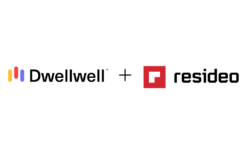Integrator Roundtable Highlights How Companies Have Emerged From Pandemic, Supply Chain Crunch, Inflation, Labor Crunch
Four integrators tell SSI what they’ve done to navigate constant challenges to their business success in the past three years.

The few. The proud. The integrators.
That spin on the transcendent Marines slogan is fitting given the context of all the battles owners and operators of security systems integration businesses have faced so far this decade.
The effects of the COVID-19 pandemic and its aftermath, the supply chain crisis, runaway inflation, labor shortage and more have found security proprietors manning all battle stations. Many casualties — in the form of shuttered or sold companies, and lost customers and revenues — have been incurred.
Although the entrepreneurial war is never won, there are positive signs that some of these adversarial forces are abating.
In Security Sales & Integration’s longstanding Annual Integrator Roundtable, four generals tell what their intrepid troops are encountering on the frontlines and share intel on their counter-measures and field maneuvers. As it has been for some 15 years, this meeting of the minds took place at PSA TEC, which this year was held in Dallas for the first time.
The location was not the only historic element. In a hopeful indication of the security industry’s push for greater diversity, equality and inclusion, the majority of the roundtable participants were women. The group consisted of Kathleen Ford, CEO of scDataCom in Savannah, Ga.; Mala Grover, CEO of Digitronics in Herndon, Va.; Eva Mach, CEO of Perfect Design in Minnetonka, Minn.; and Mike Bradley, CEO of ECD Systems in Tempe, Ariz.
As a hypothetical exercise, if you could wave a magic wand to instantly improve or eliminate something problematic in your business, what would it be?
Mala Grover: Better organization among our departments and understanding of the roles different people play. This would create a smoother operation and help accomplish projects in a shorter period of time, working smarter rather than harder.
Mike Bradley: We’re still reeling from the supply chain issues. I want that solved yesterday. The past year has been the hardest ever to manage, and that’s the bulk of the reason. If I could wave a magic wand, that would be solved instantly. It’s still costing us a tremendous amount of money.
Eva Mach: If I had a magic wand, I would transform our company into a truly recurring revenue model in the sense that everybody would accept it. I wouldn’t have to explain it. The people would embrace it, because I think that is the future. Project-based business is hard. If we could get to that magic 20% of the billing revenue or more, it would make things easier.
Kathleen Ford: Those are all terrific ideas. If I had a magic wand, I would ding, ding, ding on all of those! What Eva said is the goal for us as well. It’s been a struggle to shift from project-based to service-based, but we are trying to hit that magic pace to build a more stable recurring reve-nue base. That is aligned with the partnerships we’re seeking with our customers to create en-during customers rather than one-offs. But somehow the sale continues to be difficult. We need to crack the code on that.
Let’s continue with supply chain. Where does your company stand right now, and what were some ways you have found to get through this challenge as smoothly as possible?
Grover: We’ve tried to find alternative sources. Customers have been very supportive to a cer-tain extent. But where security is concerned, sometimes that becomes a handicap. For example, perimeter protection, if something is not working or broken and we need to replace it, having to tell the customer they have to wait eight to 12 weeks is not an acceptable solution. Then what do you find as an alternative? What can you do as even a temporary solution to keep, say, a door secured?
It’s a learning process because you are forced into finding alternatives you may not have thought of before. We are checking out other products that are locally made, other companies that may have a shorter waiting time than the bigger companies, some of which have a backlog of one year now for certain devices. In our government work, the other challenge is what’s ap-proved by the federal government on the GSA list and what is going to meet compliance.
If you had to put a percentage on it, how much time has been lost having to deal with that compared to what had been more business as usual?
Grover: A year ago, my time spent was 30% to 35%. Now, a lot of the manufacturers are getting stabilized, but it is still 20% to 25%. As an example, you need Cisco switches because that’s all the government will accept. Then that vendor says your wait time is 206 days, but my contract is 90 days and so how do I perform? Many contracts are frozen because they won’t give us an option of putting an alternative.
What’s the biggest lesson you’ve learned from this experience?
Grover: Better planning, better research when you’re recommending a product. It would be wise to spend the extra hours researching timelines manufacturers have for their products.
Thank you; Eva, how has supply chain impacted your business?
Mach: It has improved, but one of the things we’re seeing is there’s still a level of unpredictability. We place an order, and we are told it’s going to be three months, then it shows up on that Monday. But overall, there has been a definite improvement from the $2.8 million we had on backorder status in August 2022. What we have learned through this, by necessity, is develop-ing new reports and processes. We have gotten much better at looking for alternatives and un-derstanding what we need to do and when we need to do it. That will serve us well in the fu-ture.
What creates additional challenges is that, while we talk about open-platform systems, there are manufacturers with large shares of the market that are still proprietary. That makes it hard if not impossible to implement substitutions.
Grover: Yes, they say it’s an open platform but in practice what exactly is compatible with those particular systems? They may say it’s compatible, but to what extent? A lot of times for video management systems, they’ll say it’s an open platform, but in actuality the extent of that capa-bility only allows getting cameras into the recorder. All the bells and whistles that could be got-ten from a particular product go by the wayside because it’s not that compatible. It works, but it’s not totally compatible to give you all the features.

This year’s SSI Annual Integrator Roundtable at PSA TEC in Dallas once again generated some thought-provoking discussion.
Mike, what are the supply chain pain points you’ve gone through and what steps have been taken?
Bradley: As far as going forward, I don’t think as an industry we have good answers. This ex-posed some very serious weaknesses. For some manufacturers we depend on, one of those weaknesses was and remains a lack of diversity of where they obtain components for their products. Many single sources were exposed, and this was not just about chips. It was about steel, plastics and all the other components. That’s going to have to get solved, but we have no control over that.
The other thing is nobody knew this was coming. Nobody expected it and so they didn’t know what to do. That left everybody scrambling. You can forgive some of the stupid things that happened, but there’s a point at which they have to get control. It exposed the ability or inability of certain manufacturers to react. Some handled it better than others, and one of the keys was communication. One of our greatest frustrations was simply not being able to get any answers on any expectations. We have a higher level of trust today in some suppliers and a lower level of trust in others.
In our world, we have a lot of proprietary products. Open systems are a mess, as that only works to a point. It’s a case-by-case basis as some situations can be better remedied by alternative products than others. In some cases, there simply aren’t alternatives. In our fire/life-safety business, you don’t substitute another manufacturer. It just doesn’t happen without a tremendous amount of pain and expense.
Another great frustration was how manufacturers reacted to the cost. Surcharges became the norm with a number of manufacturers, costing us in the neighborhood of $500,000 off our bottom line. I didn’t expect that money to disappear last year. We grew 27%, but yet my bottom line stagnated. Plus there were more labor costs for us due to additional trips to jobsites. Instead of doing a large project and putting in hundreds of devices at once, we’re piecemealing with a few done on each trip.
The last thing that was frustrating is manufacturers would ship wat they could. We no longer did ship and complete. We would get part of the delivery, put that in and then they would for-get about the rest. That last 5% of the job, they’re trying to fulfill large orders and totally forgot they had all these other orders they had never finished fulfilling. We caught it, they caught it, and all of a sudden we found ourselves a year out on some projects.
We’re now at the stage where customers are pulling back orders and saying, “If we can’t deliver it, we’re going to go pave a parking lot with that money.” This isn’t about postponing any-more. We’re now losing projects to other priorities. This is not over. It’s far from over. We will probably not be through this until sometime in the first or second quarter of 2024. We’re still muddling through. It’s better. I like better, but we’re a long way from normal right now.
Ford: For us, the silver lining is we gained a lot of understanding of our processes and things that needed to change. Early on, the fundamental mistake with the supply chain was believing it was an acute crisis and not a chronic new way of doing business. Cash flow became an issue, storage became an issue, the space required to store partially fulfilled orders. Our purchasing processes — which were ordering it all, getting it and resourcing a job in fairly short order in accordance with the contractual requirements — had to really be turned this year and revised.
We tried to ship when complete, and then we discovered that was a problem too. Then the repeated truck rolls, unbudgeted truck rolls to do partial projects to try to satisfy customers and get something up and running. We’ve been able to take a little time out to regroup and discover a better way to do it.
On the good side, our customers have offered a lot of grace on this. I have had very few projects canceled due to extraordinarily long waits. I work with the federal government quite a bit, and the contractual dates get changed frequently without a problem because I didn’t create this problem. They’re hearing it from all vendors, which makes that conversation less difficult. They understand that this isn’t an integrator issue. It’s much larger. It’s a global issue.
We have had to get larger line of credit, get warehouse space, redesign our inventory process, our resourcing for projects that are in our pipeline, and they may sit in the pipeline for nine months with no action. All of that needed revision of our processes. I’m grateful for that oppor-tunity because it’s made us a stronger company going forward.
Bradley: Same here, we’re a better company today. I appreciate you bringing that up because we sometimes overlook the positives and concentrate on the negatives. Most of our business is new construction. We’re not a bid chase company, we negotiate with our customers. We’re not working generally for a GC or an electrical contractor; we’re working for the customer in the new construction environment. At first, people were very accommodating because nobody could deliver. You couldn’t get windows, you couldn’t get steel, you couldn’t get wood, you couldn’t get labor. It all went on and on. That’s gone. There is no longer in our world any patience. The patience left about six months ago, and we watched it happen fairly drastically.
As some people started catching up, as labor forces and the ability to build started to come back, windows started being delivered, etc. Then we saw we were behind the curve. Our industry is behind some of the curve in construction. That is what we have to face, and we’ve had to become very clear about expectations. Our contracts are better. We’re striking more language in contracts from customers than we ever have. The performance clauses, the things like penal-ty clauses, I’m striking them out entirely. I’m not negotiating new ones. I’m saying, “I will not under any circumstances do this job if you’re going to penalize us for not completing on time based upon product, etc.” It’s caused us to really change the way we do business.
Is that going to be permanent? I would like to see that because there needs to be more work-ing together and synergy between us and our customers and even contractors, and apprecia-tion for what we’re all going through. Patience is long gone and we’re back to our people being yelled at and back to them being put under tremendous pressure. Phone calls are nasty. Lawsuit threats are piling up again; “If you don’t do this by then, etc.”
Grover: We have learned a lot from this crisis. Better management of resources, better management of funds, but then it also especially puts a strain on small businesses. Even if you’re in the government arena, they are expecting projects to be finished. The question is balancing be-tween the manufacturers and the client. They’ve issued a contract, they’ve got a fixed price, performance on the fixed price. They could give you an extension to complete the project after a certain period of time, but the price is fixed. Whereas a manufacturer because of supply chain issues will come back to you and say, “By Feb. 1, the prices are going to increase by 30%. Either you purchase it or you’re going to pay a 30% increase when you’re ready for it.”
As a small business, you have to look for lines of credit then because if your switches are not coming for 206 days, your other manufacturer is increasing the price on cameras after 30 days, how do you do that? How do you balance that? How do you get the money to be able to purchase everything and then where do you store it? With the government, unless you deliver it to their site and they sign off on it, they’re not going to pay you. You’re buying inventory that is sitting in your warehouse for six months. You’ve invested in it, but the government hasn’t invested in it.
Your warranty period starts when you purchase it, the government expects you to give a one-year warranty after it finishes. How do you beat the beast? How do you get ahead of the game?
Mach: This is a very good point about the cash flow and credit lines. Add to it what’s happening with inflation and interest rates and that just provides another negative externality, as economists like to say, to this whole problem. We have to secure lines of credit. I just read The Wall Street Journal talking about the banks pulling credit plus lines, reducing lending, another wrinkle into this whole problem.
Bradley: I’ll add to the cash thing. Most of us participated in the government subsidies in the form of the PPP money and the ERTC. That solved a lot of balance sheet problems for a while. We are still seeing the benefits of that because we’re sitting on a lot more cash than we ever did. Now, how do you manage that cash? It is one thing to manage a credit line, but another when you’re actually managing cash. I never faced that problem before. I had to learn how to balance and move and deal with cash.
Another point is how we raised prices, especially in the healthcare environment eight times last year. We are now evaluating our labor pricing every three months and we’ll raise it every six months at least if not every three months. I believe we’ll be raising prices due to inflation through the end of this decade. I think that everybody needs to settle into a process for that. We’re getting our customers used to more consistent increases. My advice to anybody in any business is to come up with a new strategy for how you raise prices, how you communicate that, and how you show it and demonstrate it to stay ahead of the curve.
We’re not apologizing for pricing anymore. I will walk away from customers. If they are not willing to be a partner, then you’re not going to be a customer. That’s the way we treat our business. There are too many other customers that are willing to work with us and be partners to have to settle. I’m not in the government space, but there are choices to be a little selective about who we do business with and how we do business with them.
Grover: As for inflation, as the price of materials goes up the price for labor has to be increased. But then, as a small business, how do you fight the bigger companies that have lower prices be-cause of the volume of purchase getting them a better price than we do? They’ve got their GSA Schedules set at a labor rate that is not competitive for a small business. We do our best to get across that our quality of service and dedicated team is better, but it is a tough environment.
Ford: If your value proposition is price only, that’s delivering a different quality than I think those around this table are trying to deliver. Small businesses can be competitive with large na-tional integrators even if we don’t get product volume discounts. It’s a matter of choosing con-tracts that award on terms that you can bid where you do bring value beyond price. I’m never going to try to be the lowest price. If I can’t win a contract with what I need to have to be prof-itable and well executed, then that’s not the right customer for me.
Mach: Our business is not the lowest-priced company around, but we provide value and build relationships. We do the more complicated integration work that has more room for a lot of customers.
Right now, there’s a number of things piling on top of each other, and we continuously have to react. The supply chain is somewhere behind, but we’re in a new reality. We used to be able to place an order on Monday and have it in our warehouse on Thursday. Now, the new normal is somewhere between 30 and 90 days and so we have to have different conversations. There’s not an instant solution. We’re talking plastic, we’re talking all sorts of components.
The manufacturers are reacting. A lot of those we deal with are opening facilities in Spain, in Mexico, some of them in the U.S. They’re moving, but how long will this take? It’s a long process.
Bradley: We’re changing our business models to remain profitable. We’re putting all our time and effort into recurring revenue models, software. I’ve put my money into expanding our data tech abilities. I’ve got engineers, very expensive people, server engineers and software engi-neers, and all of this sitting in my offices now that I didn’t have five years ago. I want to move our business model away from project-based to subscription-based to software-based to recur-ring revenue-based models. I’m not talking about monitoring burglar alarm systems. We’re talk-ing about contracts at $250,000 a year.
I’m talking about equipment as a service. If you get equipment, I own the equipment, you don’t own the equipment unless you ask for it. I upgrade it, I support it and I’m charging you monthly, and I make good margins on that over time. I’ve got models already for that. I believe we’re going to have to change our business models, and the manufacturers are going to have to scramble to keep up with us. That’s where I’d like us to be.
I don’t want to be following manufacturers anymore and going where they think the market is going. I’m going to go where I think the market is going, and I’m going to look for partners that can go where I want to go.

Let’s talk more about that, in terms of service and technology opportunities and recurring revenue models.
Grover: What Mike said is a very good point, shifting away from just being project-driven with a one-time sale. It’s no longer a simple alarm system or simple access control system. There’s more to it because you’ve got software, you’ve got updates, you’ve got patches, you’ve got something that needs to be supported. RMR is something that seriously needs to be looked at, not only by the integrators but the client also. Everything is now going faster than it used to and it’s going to be very difficult for a client to keep up unless there’s a dedicated team ready to support it.
Mach: I believe we all understand this is what the future is, this is what we need to do and transition to it. Our industry has been slow to adapt to this new model of doing business. There are so many benefits. We don’t roll trucks when we have remote access. We have teams that work on a client’s side. There are so many efficiencies built into a service model rather than a project model. The financing part, however, is challenging. How do we finance this as a small business? For us, leasing is not something we were familiar with, but we are looking into that. We’re looking at different models of making this work. I believe if we solve it, it’ll put us on a more solid footing going forward.
Ford: We need to evangelize this with the customers, and we have to truly believe in it. It has to bring them a value that matches the value it brings us to be a win-win. We can’t just push it for our own profitability without truly believing it brings an improved result on the other end. Once we get that, other people can see it and fall in line. We have customers that maybe want to move from CapEx to OpEx and it works for their model. They want the newest stuff, which can be leased in a we-own-it-you-use-it model rather than a large capital investment.
There are many reasons we all are interested in this, but we’re not doing a great job of getting our heads fully around it — all the way down to the lowest level, the tech level, etc. and what that looks like. On the federal and government side of things, they’re a bit of a dinosaur sometimes. They are not the most agile and adept at changing, but they are changing. I’m seeing it with quite a few service and maintenance contracts coming out now.
There’s a learning curve for all of us to navigate. I’m seeing progress, so I feel good about that.
Bradley: I believe we have to be very creative right now. It’s not the time to follow anymore. To lead, we’re going to have to experiment. I love that. We used to do a lot of that. We had very few real solutions. We were always trying to solve problems. The problems are different, but they’re all around the management of data today. There’s very little of it around the hardware side of it. Our problems today are how are we going to manage these networks? How are we going to support them and how do we make money from it?
It starts with setting a minimum expectation for margins, which is very much higher than it ever was on products. When we talk about margin, I have a minimum requirement of 50% to 60% on anything that’s recurring. We learned the job cost all of our recurring revenue products. I treat them as I would a project. I can evaluate every single recurring revenue customer-based possibility and decide from that particular customer if I need to raise them or fire them. Can we continue or do we need to move on to something else?
That’s the only way because we’re experimenting with them. Project-based work is outcome-related. This is service-related, and service is an ongoing process. We have to learn those disciplines.
If you enjoyed this article and want to receive more valuable industry content like this, click here to sign up for our FREE digital newsletters!

Security Is Our Business, Too
For professionals who recommend, buy and install all types of electronic security equipment, a free subscription to Commercial Integrator + Security Sales & Integration is like having a consultant on call. You’ll find an ideal balance of technology and business coverage, with installation tips and techniques for products and updates on how to add to your bottom line.
A FREE subscription to the top resource for security and integration industry will prove to be invaluable.








